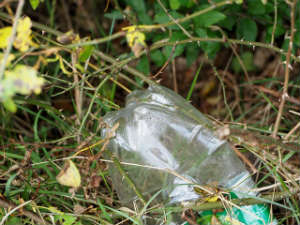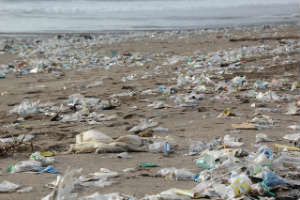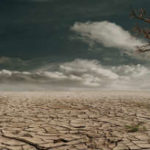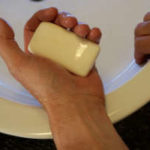Is Plastic Pollution Destroying Our Health?
Pollution is a terrible problem that plagues our planet and one that Ira Riklis has great concern about. When you think of the pollution associated with plastic, chances are you envision heaps of plastic bags, bottles and other forms of plastics in landfills and in the ocean. Every time you throw away a plastic bag, you know that plastic bag will take hundreds of years to biodegrade. That means that it will sit somewhere on land or make its way to the waterways and eventually the ocean causing harm all along the way. Even though pollution from plastic is a global problem, only about 14 percent of plastic packaging is recycled globally. That is a staggering statistic and sheds light on how widespread this problem is.
Microplastics Are Everywhere
It’s a well-known fact that plastic has polluted the oceans and scientists have studied its effects on marine life and ecosystems for years. However, the effects of plastic pollution elsewhere are just beginning to be explored. In recent times, researchers have found microplastics in the soil, bottled water, tap water, beer and even the air. Because these microplastics are everywhere there’s an increased concern about the health risks such pollution poses.
When you drink bottled water, you probably assume that it is safe. But, not so fast. Studies have shown that tiny bits of plastic have been found in bottled water. It is possible that the bottled water you thought you could trust may contain thousands of microplastic fibers. Because these fibers are tiny, they pass through the body to the organs. Although studies on human health are too new to draw any conclusions, what is known is that plastic was never meant to be ingested. It acts like a sponge by soaking up all the chemicals around it that can include pesticides and other toxic substances. Although scientists don’t know the exact effect on human health, all can agree the effects probably are not good.
Where Microplastics Originate
When plastic packaging and other plastic compounds break down, they form microplastics. But, they can also originate from other sources that allow them to find their way into the food we eat and the water we drink. Some common sources of microplastic pollution include:
- Fertilizers
- Sewage Sludge
Fertilizers are thought to be one of the leading sources of microplastic pollution. Sewage sludge creates a problem when cosmetics contain microbeads that are essentially microplastics and clothing fibers get washed down the drain. They make their way through the water treatment system and are released back into the environment which means they are all around us.
The Threat of Plastic to Marine Life
In the ocean, plastic pollution is a serious health hazard that causes environmental damage. Plastic can be eaten by marine life or mistaken for food. It also could get into the stomachs of marine animals and clog their digestive systems. Some plastic has been shown to take years to break down in the ocean, which means it will continue wreaking havoc on our planet for many years to come.
Marine animals such as the albatross are ingesting plastic through their food when they eat fish and squid that have eaten plastics that were mistaken for food. Because of this, creatures like seabirds and marine mammals are being threatened with starvation and death if they continue to ingest plastic.
Plastic Bag Ban
The problem of plastic pollution is so serious that Governor Andrew Cuomo has introduced a bill to outlaw plastic bags by 2019 in New York State. Cuomo wants to take this measure to counteract the blight of plastic bags because of their devastating effects on New York’s streets, water, and natural resources. While it’s unclear if this bill, if passed, would mitigate the plight of the plastic problem, there are steps each individual can take to reduce the amount of pollution caused by plastic. For instance, when you go to the grocery store, you can opt to pack your groceries in boxes or paper bags. An even better option would be to take your groceries home in environmentally-friendly reusable grocery sacks. Each plastic bag you don’t use is another plastic bag that’s kept out of the landfill and one more bag that won’t make its way to the ocean or get broken down into microplastic fibers.
Although more research into how plastic is affecting our health is needed, it is safe to assume that the effects on health are not favorable. Therefore, it is best to reduce the use of plastic and recycle when you can.
Notable (And Everyday) Ways We Can Reduce Our Use of Plastics
Here some simple steps you can take to reduce your use of plastic in the home.
Stop Using Disposable Plastic Bags
There are all sorts of reusable bags that you can purchase from local shops and online stores. These reusable bags will offset the amount of plastic bags in landfills, and they will allow you to shop with style. The best part about using this type of bag is that you can choose a design that suits your personality, or you can buy similar designs if you have more than one bag in mind. When it comes time for an outing, all you’ll need to do is grab your reusable shopping bags and get on with your day.
Stop Using Plastic Water Bottles
Plastic water bottles are a common form of plastic that many use for daily drinking. Many plastic water bottles contain BPA, a chemical that has been found to cause health issues in both humans and animals. BPA also affects the health of ocean creatures. Therefore, it is best to purchase a reusable water bottle that you just fill up with water from the tap. Also, it is important to support companies that are using recycled plastic for their products as it reduces the amount of plastic waste getting into the ocean.
Plastic Straws
Plastic straws are another commonly found piece of plastic trash. Plastic straws can persist in the environment for over 500 years. If you don’t want to use a plastic straw, then you can purchase one made of edible or paper based materials and carry it with you when going out to eat.
Stop Buying Disposable Batteries
You might not think that batteries are made of plastic, but they are. Disposable batteries contain toxic heavy metals and other chemicals that are harmful to the environment. The best option would be to buy rechargeable batteries and an automatic battery charger.







